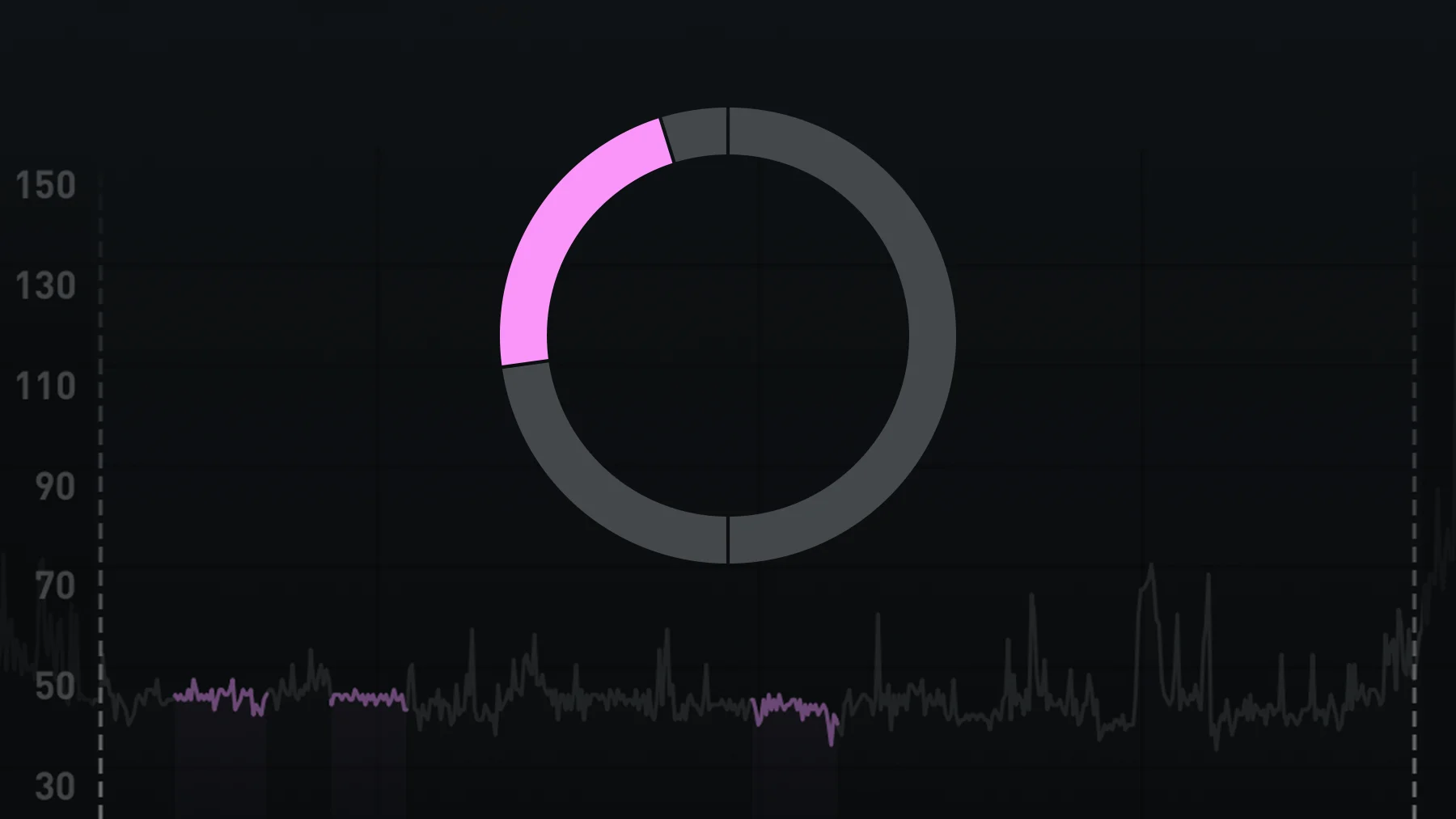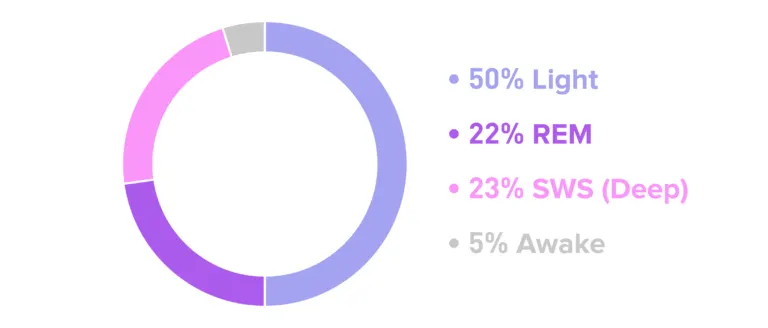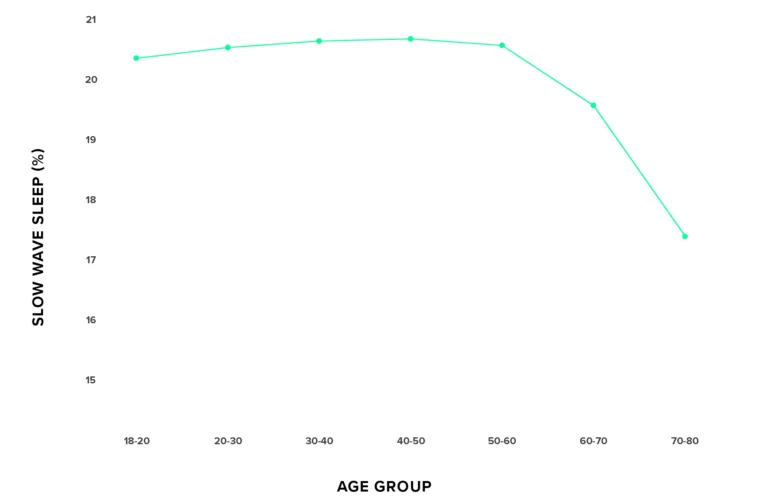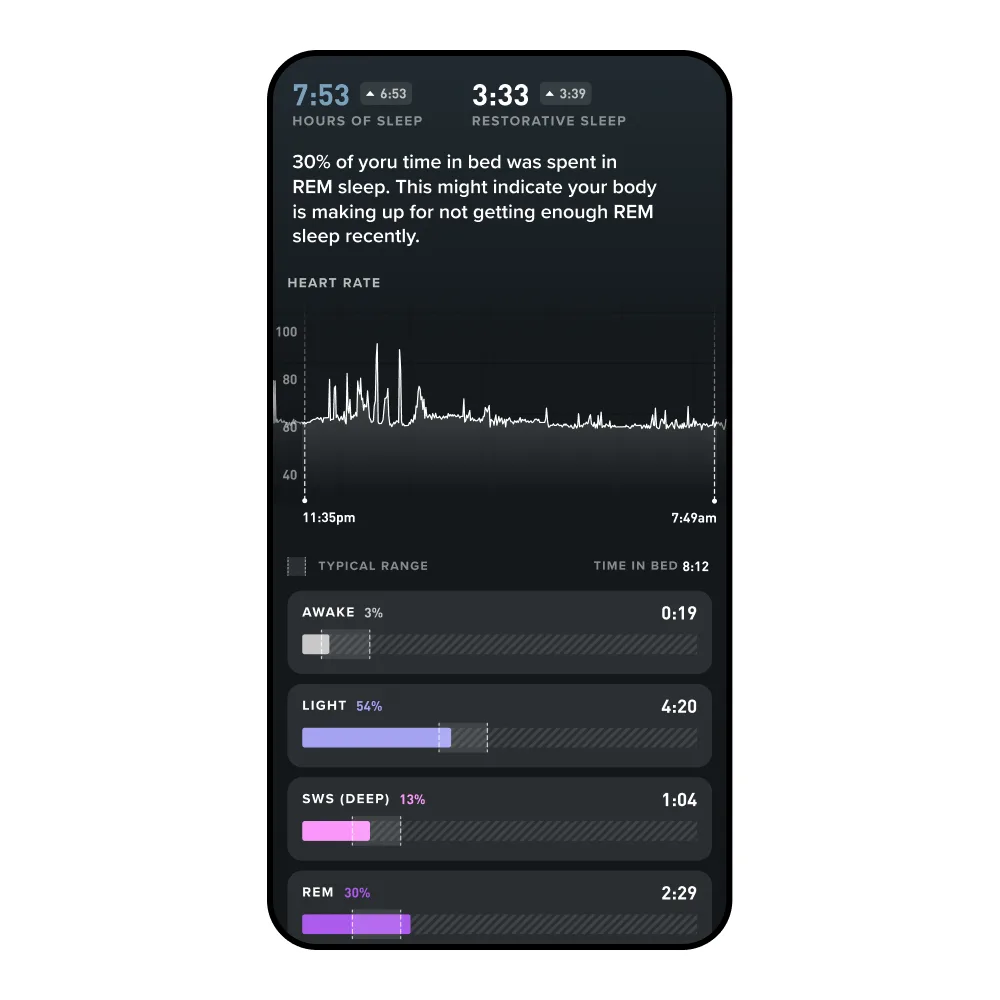Topics
- Article
- Sleep
Everything You Should Know About Slow Wave Sleep (SWS)

Slow wave sleep (SWS) is the physically restorative stage of sleep when cells regenerate and your body repairs itself.
Slow wave sleep (SWS) is one of the 4 stages of sleep (along with wake, light sleep, and REM sleep) that your body spends time in on a nightly basis. Below we’ll discuss the basics of slow wave sleep and explain what it is, what happens during it, why your body needs it, how much you should get each night, and what you can do to improve it.
What is Slow Wave Sleep?
Slow wave sleep is also known as deep sleep--it is the stage of sleep when your body is in its most restful state. Your brainwaves are the slowest during SWS, and when monitored with an EEG their activity is synchronized. During this time your heart rate and respiratory rate decrease significantly, and your muscles relax as well. It can be quite difficult to wake up from slow wave sleep, even if there are loud noises. If you are woken during SWS, you often feel disoriented and groggy. After falling asleep, your body soon transitions from light sleep to slow wave sleep (then later to REM sleep). Your first period of SWS usually lasts 45-90 minutes. As the night goes on, episodes of SWS become shorter in the sleep cycles that follow. Most adults typically go through about 3-5 full sleep cycles a night.
What is the function of slow wave sleep & why is it important?
Slow wave sleep is when your body physically restores itself. Roughly 95% of human growth hormone is produced during this stage of sleep. A common misconception people have is that you get stronger when you’re at the gym or while you're exercising, but that is not the case. Working out causes your muscles to break down, then they build themselves back up again during slow wave sleep. Getting a sufficient amount of SWS is crucial in order to maximize your potential gains from that day’s training. Additionally, each of the following processes happen during slow wave sleep:
- Blood flow to muscles increases
- Cells are regenerated
- Tissues and bone are repaired
- Immune system is strengthened
- Blood sugar levels and metabolism are balanced
- Brain is detoxified
How much slow wave sleep is normal?
Most adults typically spend 15-25% of their time asleep in SWS, which translates to about an hour or two per night. Here are the average sleep times (and percentages) by stage for all WHOOP members.

On average, WHOOP members get 1 hour and 27 minutes of slow wave sleep each night, which is 18.5% of their total time in bed. The middle 50% get between 1:23 and 1:32 per night, or 17-20%. It’s worth noting that SWS tends to decrease with age, primarily due to the fact that growth and development are essential components of it. Adults spend less time in slow wave sleep than children do, and seniors get even less of it than adults.

The average percentage of slow wave sleep by age group, tracked by WHOOP.
How to get more slow wave sleep
For the most part, anything you can do to better your sleep hygiene overall will most likely extend your time spent in the slow wave sleep stage. The easiest thing you can do is just devote more time to being in bed. Here are 5 simple ways to improve your sleep. Along those lines, we’ve found that improving your sleep consistency (going to bed and waking up at similar times every day) is especially beneficial for SWS. A data analysis from 25,000 WHOOP members showed a distinct rise in the amount of nightly slow wave sleep they got as their sleep consistency percentage went up.

Better sleep consistency leads to more slow wave sleep.
Sleep consistency helps maintain the body’s 24-hour internal clock, known as your circadian rhythm. When your body functions on a predictable schedule it is able to run more efficiently and can better anticipate the onset of sleep, which in turn helps your slow wave sleep. One thing that is extremely detrimental to SWS is drinking alcohol prior to bedtime. When your body is working to process alcohol in your system it has a great deal of trouble getting past light sleep and into slow wave sleep. This is particularly problematic since a significant portion of your nightly SWS generally occurs during your first sleep cycle, the one that is most affected by alcohol consumed before falling asleep. Learn More: WHOOP Data Insights for How to Increase Deep Sleep
Track Your Slow Wave Sleep with WHOOP
WHOOP tracks your sleep in detail and tells you exactly how much time you spend in SWS and each of the other stages of sleep. Now, you can also see your restorative sleep trends (your combined deep and slow wave sleep) over time for a closer look at how much you’re getting and when. The app feature Sleep Planner uses your natural circadian rhythm to recommend daily bed and wake times to maximize the quality of your sleep. It also includes haptic alerts to gently and silently wake you at a time of your choosing or when you’ve hit your desired sleep goals.
